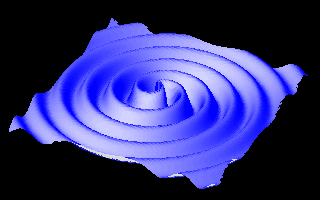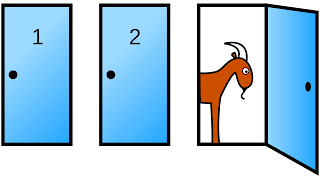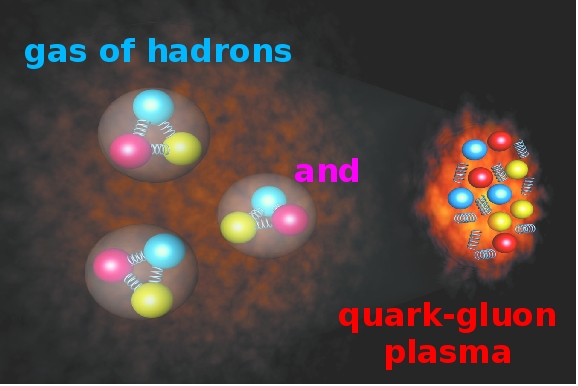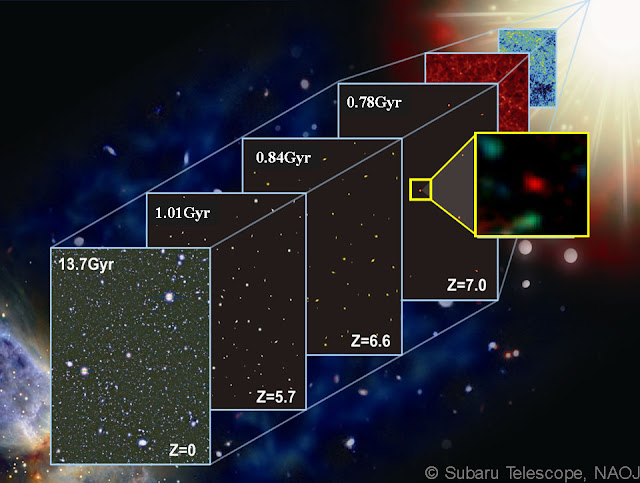 |
| LIGO detector at Hanford, Washington. Credit : LIGO Laboratory |
"Ladies and gentlemen, we have detected gravitational waves. We did it!".
Yesterday (11 Feb 2016), physicists at LIGO, officially declared the discovery of gravitational waves. Rumours have been spread months before the declaration and medias were going frenzy. Scientific world was eagerly waiting. Words of the notable physicist, Lawrence Krauss, before the official declaration, "New era in Astronomy and Physics could begin". It is said to be the discovery of the century.
But why this fuss? Why scientists are going crazy about this? Is it going to change our understanding of the Universe?
 |
| Credit : sciencenews.org |
First let us know what a gravitational wave is. The concept of gravitational wave was put forth by the renowned scientist, Albert Einstein, through his mind numbing, General Theory of Relativity. According to General Relativity, space and time are aspects of a single measurable reality called spacetime. The objects in space can create warps in the fabric of spacetime. More massive the object, more the warping would be. This curves in the fabric of spacetime is the reason behind the gravity.
Moon does not revolve around earth, as earth pulls it, instead it takes the direct path in four dimensional spacetime.
If the spacetime can be warped like a fabric, then it can be rippled also. It will ripple when there is a sudden movement of massive objects. If an object, big or small, is sitting still or in constant motion, it's gravitation field will be static and there won't be any gravitational wave. But when it moves suddenly (speeding up, slowing down or changing direction), like in an explosion, then its gravitation filed changes and causes the ripples in spacetime. Such ripples in the fabric of spacetime are called as gravitational waves. Earth too gives off gravitational waves, but its extremely weak and faint.
 |
| Credit : Wikimedia |
Scientists of LIGO successfully discovered the ripples caused by the collision of two massive Black holes, 1.3 Billion years ago. But how do they detect it?
When the ripples in the fabric of space time reaches an object, it can make it stretch and squeeze. The ripples from the collision of those Black holes can make entire Earth expand and contract by 1/100,000 of a nanometer, that is about the width of an atomic nucleus. That is absolutely miniscule. For detecting such a minute wave, we need an extra precise device.
Thus we made the LIGO (Laser Interference Gravitational-Wave Observatory). LIGO comprises of 'L' shaped device called interferometers, with arms of 4 kms long and about a little more than a meter wide. Let's see its working.
In LIGO, laser beams are passed through the arms of the device, at the same time. At the end of each arm, there is an ultra precise mirror, which will reflect back the laser. Laser then travels back and the two beams will join at one point and overlaps and creates an interference pattern. This pattern will be the same, every time the laser overlaps, when there is no gravitational wave. When a gravitational wave passes by, one arm will get stretched and the other get squeezed, thus making differences in the length of both the arms. If the beams travel different distances, then while overlapping, it creates a different interference pattern. These changes in patterns are noted to detect gravitational waves. LIGO is capable to detect a minute distance change of 1/10,000 the width of a proton.
 |
| Signals seen in Livingston and Hanford detectors. Credit : LIGO |
As LIGO is so sensitive, even a movement of truck or distant ocean waves can shake the mirrors, thus causing difference in measurement. The main trouble scientists face was to clear off the noises. The mirrors were hung from quadruple pendulum to isolate the external shaking. And also, the readings of two observatories (at Hanford, Washington and Livingston, Louisiana), which is 2000 miles apart, are taken and analysed to eliminate the local shakes, that are felt by a single observatory, while the authentic cosmic gravitational waves will felt by both.
That's it. That is how scientists discovered the gravitational waves. Now you maybe asking, what is the significance of this discovery? One thing is that, Einstein's Theory of Relativity is again found to be correct. And also it proved Hawking's predictions on Black Holes. Besides that, we got a new form of media to know the Universe. We were searching and knowing the Universe only by using electro magnetic waves till date. Now we have got a new way of 'seeing', that can lead to many stupendous discoveries.
The sensitivity of LIGO will further enhanced until it reaches the design sensitivity on 2021. We can expect many more detections and improve the knowledge on how Universe works.
For more detailed reading, you can download the press release from LIGO here, http://www.ligo.org/news/detection-press-release.pdf
For more detailed reading, you can download the press release from LIGO here, http://www.ligo.org/news/detection-press-release.pdf



















